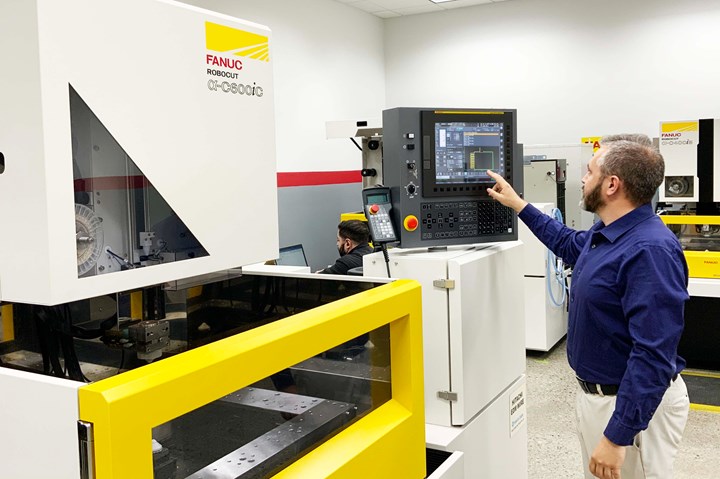Wire EDM Series Redesigned for Increased Capacity and Throughput
Constructed for ultimate rigidity, the FANUC RoboCut α-CiC machine series from Methods Machine Tools offers users a new table construction, more straightforward auto-wire feeding panel and new upper guide.
Share

Photo Credit: Methods Machine Tools Inc.
The FANUC wire EDM machine, the RoboCut α-CiC series, from Methods Machine Tools Inc. has been redesigned from the bed to the control to give users ultimate ease of use and world-class performance, for elevated EDM capacity and increased throughput.
Design changes include a new table construction for better accuracy, a more straightforward auto-wire feeding panel and a new upper guide for easier maintenance and improved reliability.
Constructed for ultimate rigidity, FANUC America says the α-CiC series minimizes the amount of distortion embedded into each part. New discharge devices, powered by the SF3 power supply, improve surface roughening capabilities while maintaining high cutting speeds.
Additional features include a taper adjustment function for high-precision taper cutting, thermal displacement compensation for increased stability and faster cycle times via its automatic wire feeding system—AWF3—and core stitch technology.
Available in two sizes, the RoboCut α-C400iC has travel lengths of 15.748” (400 mm on the X-axis, 11.811” (300 mm) on the Y-axis and 10.039” (255 mm) on the Z-axis.
Travel on the α-C600iC is 23.622” (600 mm), 15.748” (400 mm) and 12.204” (310 mm) on the X-, Y- and Z-axis, respectively.
Related Content
-
6 Ways to Optimize High-Feed Milling
High-feed milling can significantly outweigh potential reliability challenges. Consider these six strategies in order to make high-feed milling successful for your business.
-
How to Eliminate Chatter
Here are techniques commonly used to combat chatter and guidelines to establish a foundation for optimizing the moldmaking process.
-
Solving Mold Alignment Problems with the Right Alignment Lock
Correct alignment lock selection can reduce maintenance costs and molding downtime, as well as increase part quality over the mold’s entire life.















